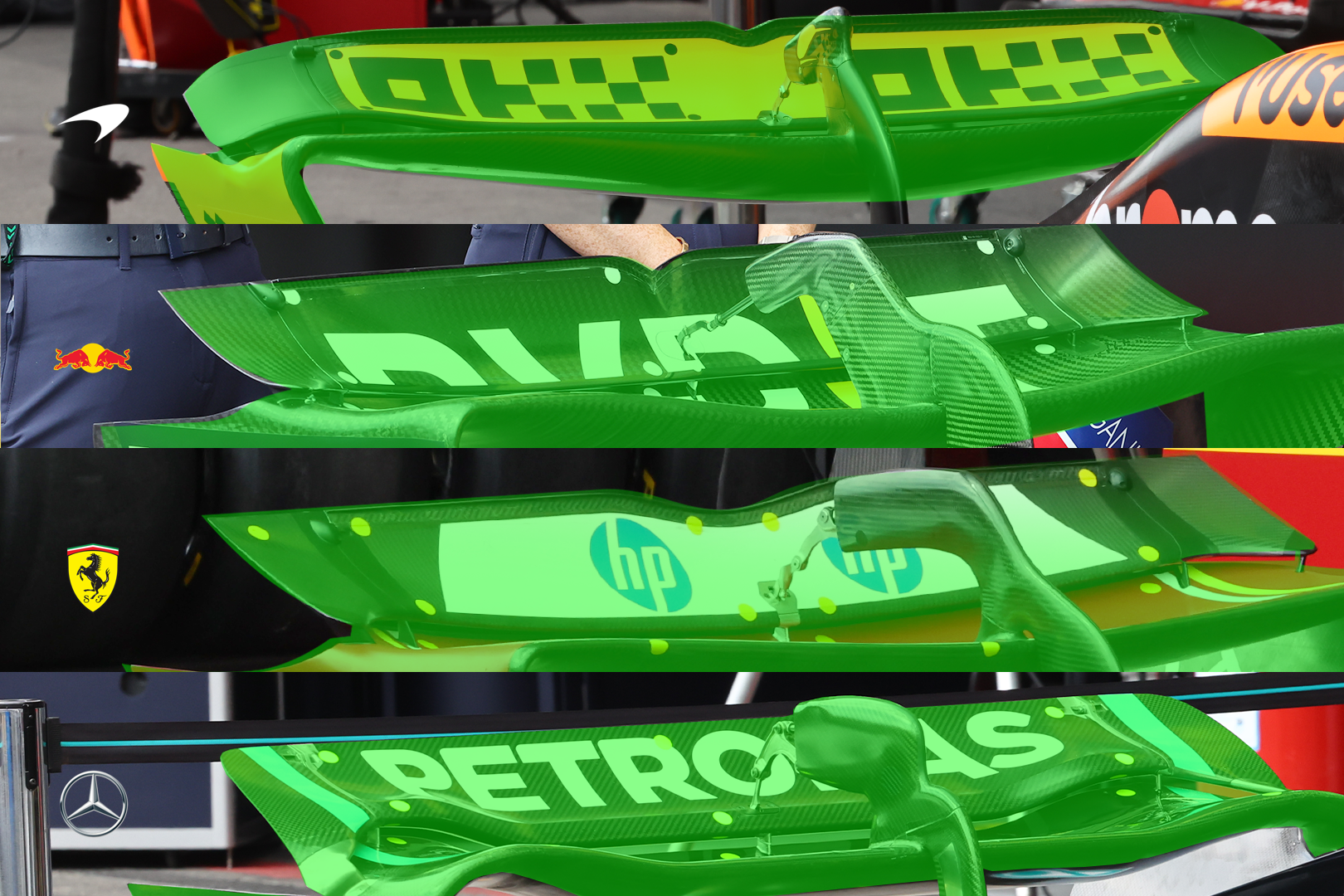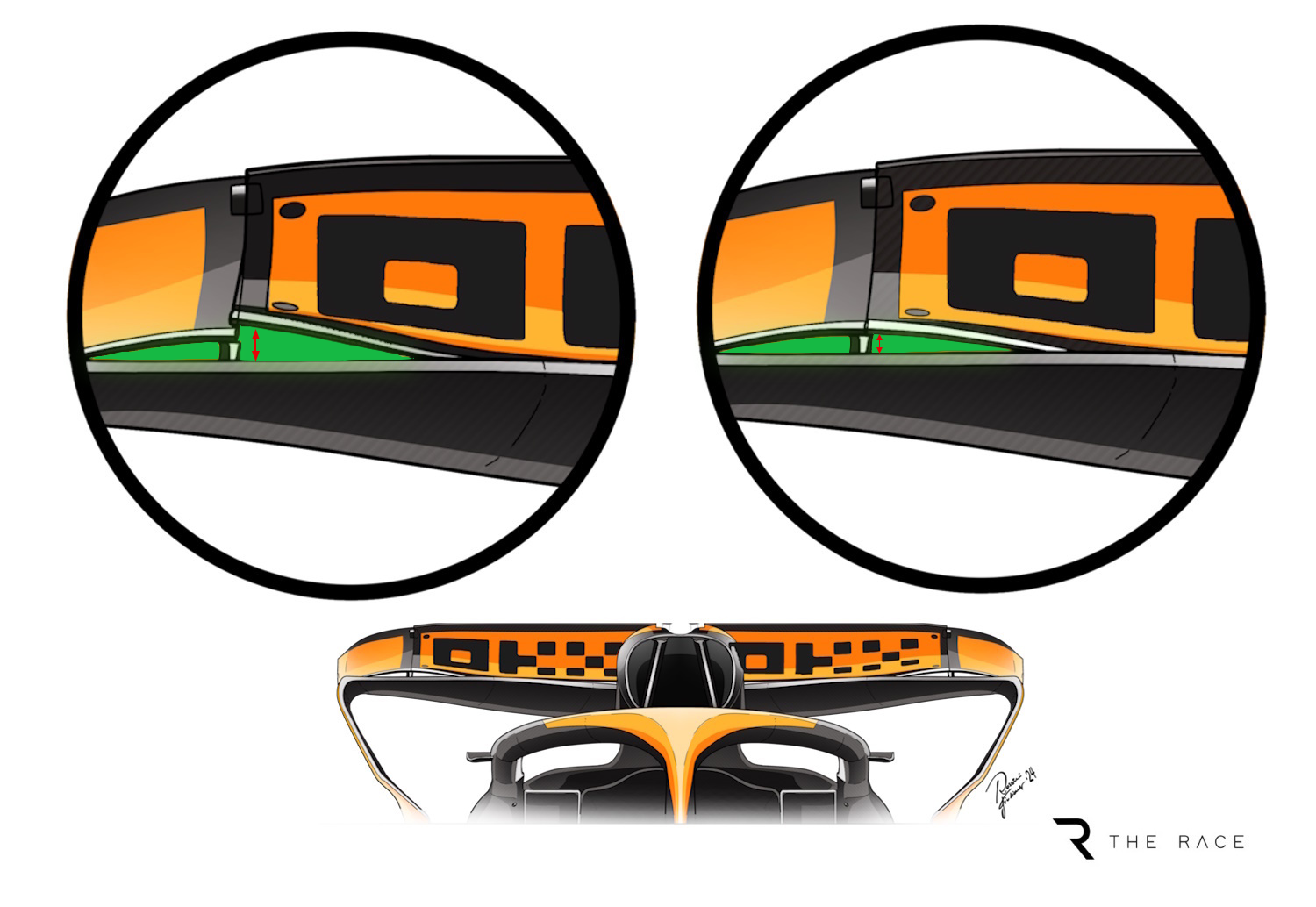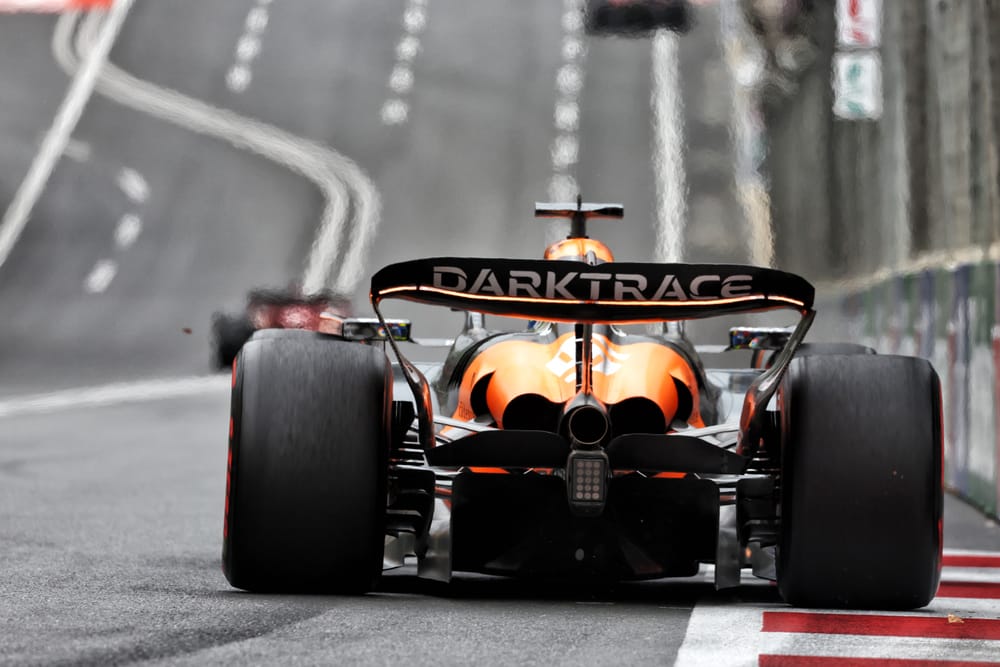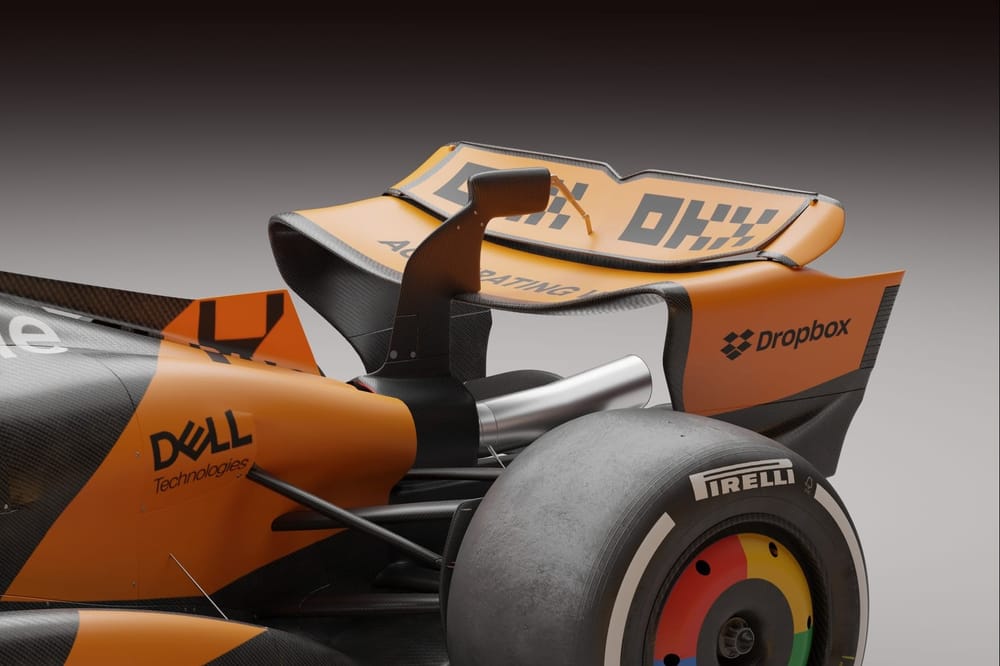Up Next

McLaren’s rear wing gambit is pure Formula 1. It couldn’t have been executed more beautifully, allowing it to run a rear wing that was particularly beneficial for Spa, Monza and Baku before it was asked to modify it thereafter.
Call it cheating all you like, but it isn’t. It’s important to stress that McLaren played the game correctly every step of the way and deserves credit for doing so. And the reason for that lies in the fundamental limitations of the flexible bodywork rules and the way the FIA polices the regulations.
By its very nature, the regulation demanding all aerodynamic components and bodywork be “rigidly secured” and “immobile with respect to their frame of reference” is a problem.
Nothing can be absolutely rigid, and no static test can fully replicate the loads bodywork is subjected to on track. This makes it the perfect realm in which to seek an advantage and a profoundly difficult one to police.
Red Bull is a past master when it comes to the dark art of aeroelasticity, but this time it’s McLaren that has played a blinder. Remember, McLaren’s Rob Marshall made it clear that it worked with the FIA to establish the legality of its rear wing – and that includes access to designs. That, combined with passing the load tests means that the wing therefore was indeed absolutely legal until it wasn’t.

The only mechanism for changing that interpretation would be a protest, which would be heard by the stewards who are appointed by, but independent of, the FIA. However, as Ferrari team principal Fred Vasseur admitted when I asked him that exact question it would be “difficult to prove”.
Regardless of the semantics of whether the FIA instructed McLaren to make changes for the future or McLaren proactively offered – and most likely these are probably just different interpretations of the same two-way discussion – it all adds up to the same thing. McLaren pushed the limits and benefitted for three key races from a very effective - and legal - rear wing, one that will only be run in the future with "minor changes" made. And all credit to it for having the ability to create an assembly with such characteristics as that is far from easy in itself.
It seems reasonable to imagine that McLaren knew it was doing something that would attract attention and worked on the basis this could be the outcome. After all, there are countless cases of flexible bodywork running for a period then, suddenly, one day, that changes, in F1 history. And if you’re the team being curbed by such action, it will also apply to other teams so it also stops whatever rivals might be doing in the same area.
Fundamentally, in F1, you must butt up against the regulations and endeavour to steal every scrap of ground you can. It’s not about your car being absolutely legal, but about it being ‘not illegal’. That might seem like semantic nonsense, but it’s at the epicentre of the technical battle in Formula 1.
Flexible bodywork controversies have recurred endlessly in F1 history. The only thing that changes is which team is pushing the boundaries the most and which are not, with that ever-shifting latter group cast as the aggrieved party. Publicly, they will complain, but privately there will be frustration that they didn’t push as hard as McLaren did.

It comes down to what can you design, how far dare you push it and what benefit do you get for what risk? That’s always been the game in F1 and when it comes to the flexible bodywork rules in particular it always will be. You can be certain there will be more controversies in the future, but McLaren in this case, just as Red Bull, Ferrari, Lotus, Renault - any other successful team you care to name - has done in the past, has acted in a way entirely congruent with the ethos of F1 when it comes to the technical side of the competition.
It'll probably be another team next time, and they too will deserve applause for pushing the limits in the finest traditions of grand prix racing.
The only area where McLaren has fallen short when it comes to this is failing to maximise the yield by only winning one of the three races it could run the rear wing in its original specification for.
And for those who would criticise McLaren for this, remember that in F1 something really can be legal today, but illegal tomorrow without any change of the regulations.




